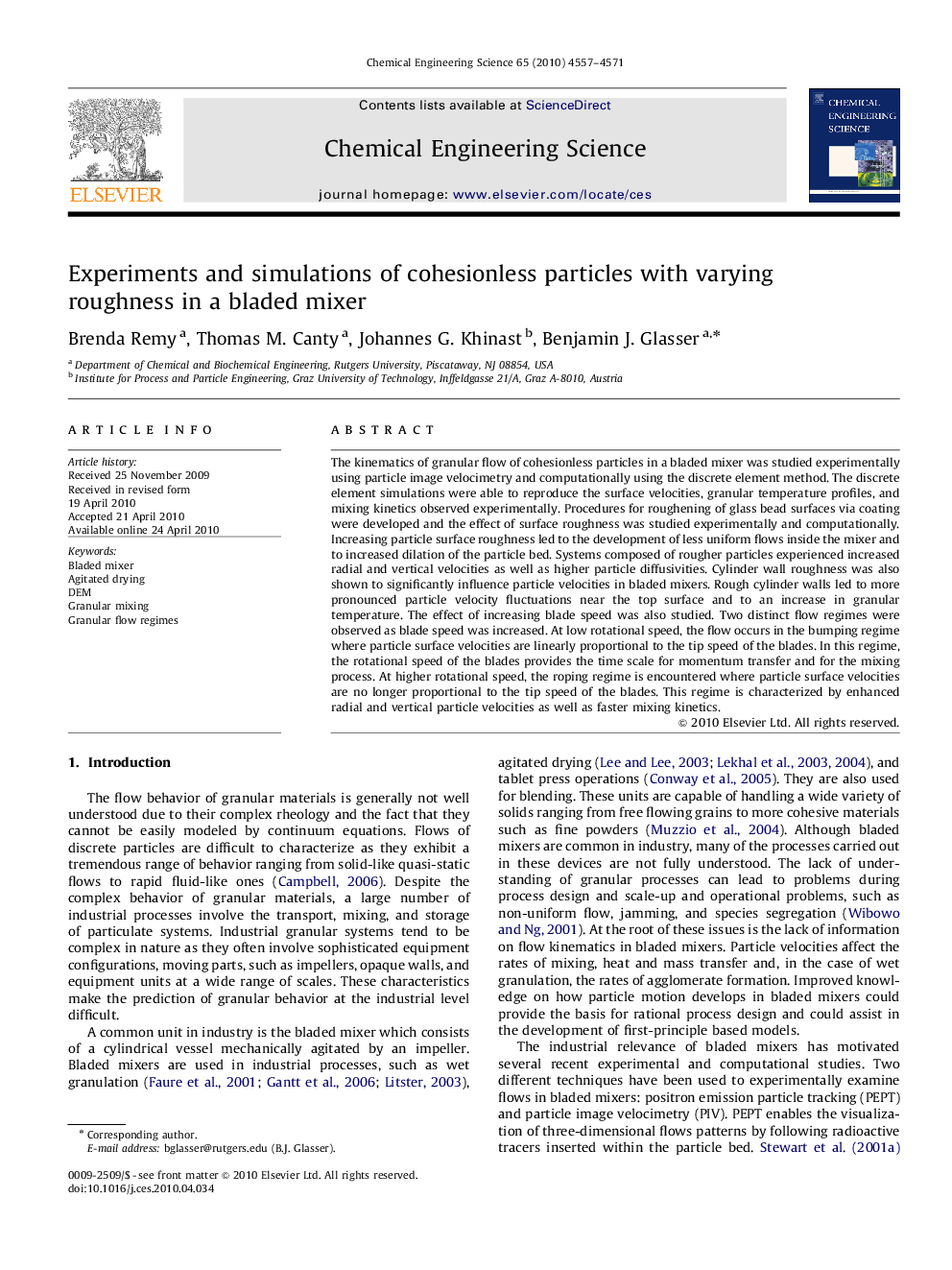| Article ID | Journal | Published Year | Pages | File Type |
|---|---|---|---|---|
| 156632 | Chemical Engineering Science | 2010 | 15 Pages |
The kinematics of granular flow of cohesionless particles in a bladed mixer was studied experimentally using particle image velocimetry and computationally using the discrete element method. The discrete element simulations were able to reproduce the surface velocities, granular temperature profiles, and mixing kinetics observed experimentally. Procedures for roughening of glass bead surfaces via coating were developed and the effect of surface roughness was studied experimentally and computationally. Increasing particle surface roughness led to the development of less uniform flows inside the mixer and to increased dilation of the particle bed. Systems composed of rougher particles experienced increased radial and vertical velocities as well as higher particle diffusivities. Cylinder wall roughness was also shown to significantly influence particle velocities in bladed mixers. Rough cylinder walls led to more pronounced particle velocity fluctuations near the top surface and to an increase in granular temperature. The effect of increasing blade speed was also studied. Two distinct flow regimes were observed as blade speed was increased. At low rotational speed, the flow occurs in the bumping regime where particle surface velocities are linearly proportional to the tip speed of the blades. In this regime, the rotational speed of the blades provides the time scale for momentum transfer and for the mixing process. At higher rotational speed, the roping regime is encountered where particle surface velocities are no longer proportional to the tip speed of the blades. This regime is characterized by enhanced radial and vertical particle velocities as well as faster mixing kinetics.
